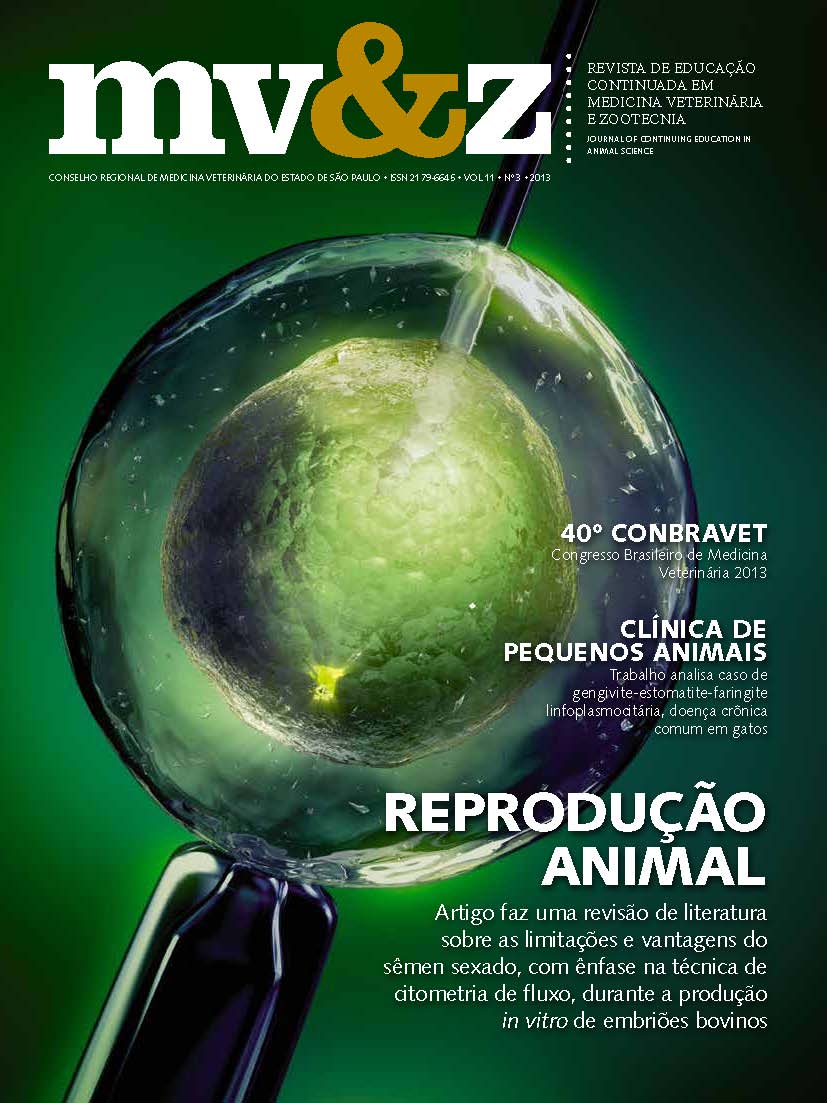Positivity and classification of bats submitted for rabies diagnosis at Pasteur Institute over the period from 2007 to 2012
Conteúdo do artigo principal
Resumo
The bats are a major reservoir of rabies virus and have a relevant importance in the disease transmission. The aim of this study was to evaluate the bat population submitted for rabies diagnosis. Data were analyzed from 18.805 bats received by the diagnostic section of the Pasteur Institute of Sao Paulo, originated from several counties of the state of Sao Paulo over the period from 2007 to 2012. These specimens were morphologically classified according to their family, at the time of execution of the rabies diagnosis technique. The central nervous system from these animals was submitted to direct immunofluorescence test and, when viable, to viral isolation. From the total of bats received, 76.92% bats belonged to the Molossidae family, 12.14% to the Phyllostomidae family, 9.52% to the Vespertilionidae family, 0.02% to the Noctilionidae family and 1.37% to a group of bats whose identification was not possible to establish. Regarding positivity, 261 (1.44%) bats were diagnosed positive, 94 (36.01%) were from Vespertilionidae, 87 (33.33%) were from Phyllostomidae, 79 (30.27%) were from Molossidae and 01 (0,38%) was unable to classify. We also observed a total of 197 (1.26%) bats that were not submitted to the diagnosis due to poor preservation of the samples. These results showed that Molossidae was the main family received for rabies diagnosis; however, the positivity was higher in the Vespertilionidae family. The dynamic population investigation of the species is necessary in order to promote a better understanding of rabies seasonality in bats. These data reinforce the importance of an active search for suspect animals in order to establish new control strategies of these animals considering the epidemiologic surveillance of rabies and other zoonosis.
Detalhes do artigo
Seção
1. Autores mantém os direitos autorais e concedem à revista o direito de primeira publicação, com o trabalho licenciado sob a Creative Commons Atribuição-NãoComercial-SemDerivações 4.0 Internacional
2. Autores têm autorização para assumir contratos adicionais separadamente, para distribuição não-exclusica da versão do trabalho publicada nesta revista (ex.: publicar em repositório institucional ou como capítulo de livro), com reconhecimento de autoria e publicação inicial nesta revista.
3. Autores têm permissão e são estimulados a publicar e distribuir seu trabalho online (ex.: em repositórios instituicionais ou na sua página pessoal) a qualquer ponto antes ou durante o processo editorial, já que isso pode gerar alterações produtivas, bem como aumentar o impacto e a citação do trabalho publicado (Veja O Efeito do Acesso Livre);
